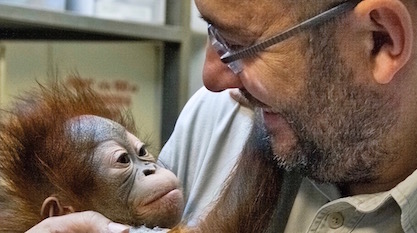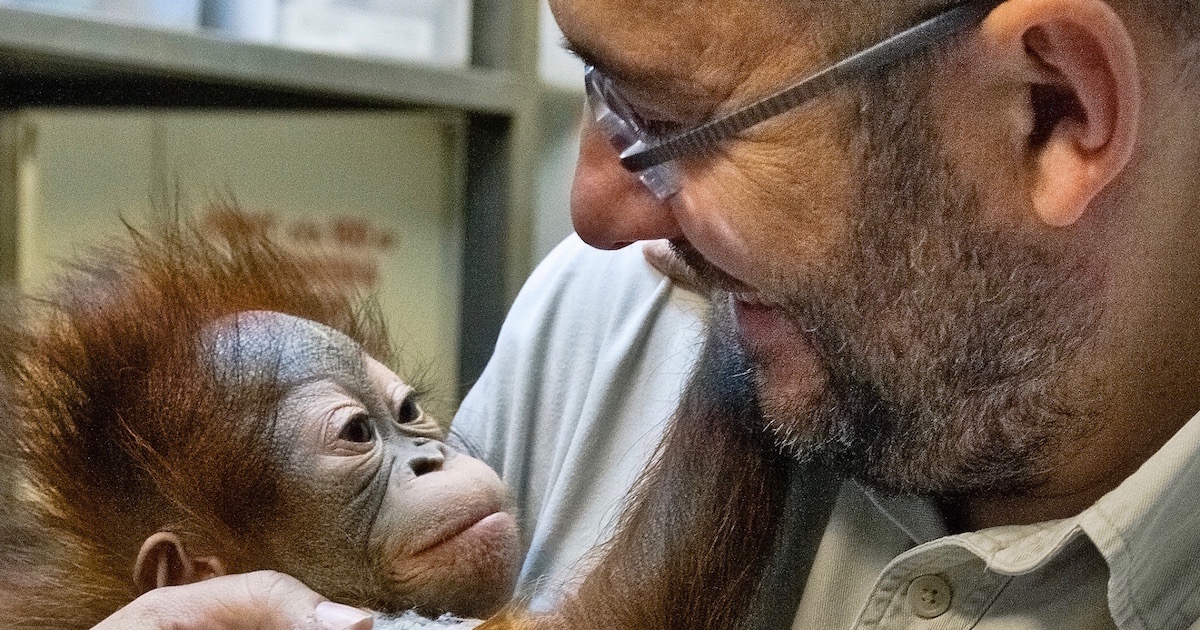 Evolution
Evolution
 Human Origins
Human Origins
 Intelligent Design
Intelligent Design
Adam and the Genome and Human-Ape Genetic Similarity


In Adam and the Genome, Trinity Western University biologist Dennis Venema covers many other subjects besides what you might expect from the book’s title. We have been reviewing this material by the prominent theistic evolutionist and BioLogos author; find the series so far here.
Thus, Venema cites the high degree of genetic similarities between insulin genes in humans and other mammals as evidence for our common ancestry. He writes:
[W]e can see that there is good evidence to support the hypothesis that these two present-day genes come from a common ancestral population in the distant past … What we observe for this short segment is that the gorilla sequence is identical to that of the human except for one letter; the chimpanzee is identical except for three; and the orangutan is identical except for five. As before, this level of identity far exceeds what is needed for functional insulin, and strongly supports the hypothesis that humans share a common ancestral population with great apes. Indeed, the similarities between these sequences make English and West Frisian look like very distant relatives by comparison.
(Adam and the Genome, p. 30)
The obvious answer to this argument is common design — that humans, gorillas, and orangutans were designed based upon a common blueprint. This would explain genetic similarity between humans and other species quite well.
Venema is aware of this objection, and he doesn’t buy it:
Suppose you decided you wanted to design two languages. Would you design them in such a way that they appear to be closely related to each other, especially if your prowess as a designer is such that you can effortlessly design languages in any way you wish? Furthermore, as a designer, you understand that there are many possible ways to design words, grammar, syntax, and so on. Would you make it appear that your two languages are related to each other, if indeed you wanted to convince others that they were separate, independent creations? (p. 32)
There he goes again, telling God what he can and cannot do. It’s a bit of chutzpah, don’t you think? He’s also telling God what God must intend when he does certain things. In particular, Venema is telling God that if he designs two species to be similar then God must thereby intend to tell us that those species are related through common ancestry. And if those species aren’t really related, then Venema tells God that he is being deceitful.
But what if Venema is putting thoughts into God’s head that aren’t there? What if God could have entirely different purposes for designing two species as similar — purposes that have nothing to do with trying to communicate some message to humans about relatedness or unrelatedness?
The reality is that this is not a theological question. There are good logical reasons why different species may have similar genetic sequences: namely, functional requirements. Those requirements have nothing to do with common ancestry. Engineers know from much experience that there are good ways to design things and bad ways. If you want your design to work a certain way, and you find a good blueprint that accomplishes what you seek, then it’s a good design principle to use that blueprint over and over again. That could easily explain why we see similarities in different species — common design to meet functional requirements.
Even Francis Collins acknowledges the merits of this argument, stating:
Some of that evidence is shown in Table 5.1, where the similarity between the genomes of ourselves and other organisms is displayed. This evidence alone does not, of course, prove a common ancestor; from a creationist perspective, such similarities could simply demonstrate that God used successful design principles over and over again.
(The Language of God, p. 134)
Though Collins of course thinks that common ancestry is a better explanation, his point here is exactly right. Reusing successful designs (like reusing genetic sequences) is a completely valid explanation for why genetic similarities exist between humans and other species.
Like many evolution proponents, Venema is thinking inside an evolutionary box. The similarities he observes may boil down to common design, but he apparently can’t see that. Whether we humans properly interpret or misinterpret the meaning of those similarities need not be God’s concern.
Venema’s points here ultimately seem to be rhetorical, though. He writes: “No matter how you slice it, the human and chimpanzee genomes are nearly identical to one another.” (p. 32) This is supposed to impress the reader, leaving no alternative but to conclude that humans and chimps must be related. Venema admits that by some metrics the human and chimp genomes are only 95 percent similar. Fine. But the exact number really isn’t important. What is the metric for demonstrating common ancestry based upon genetic similarity? There doesn’t seem to be one. Venema’s argument appears arbitrary.
Moreover, others geneticists have argued that human-ape genetic similarity might be significantly lower than 90 percent. See, “Human/Ape Common Ancestry: Following the Evidence.” See also, “Critically Analyzing the Argument from Human/Chimpanzee Genetic Similarity.” Perhaps the best treatment of the issue of human-chimp genetic similarity, however, is the chapter “Genetic Evidence for Human Uniqueness,” by Ann Gauger, Ola Hössjer, and Colin Reeves in the book Theistic Evolution: A Scientific, Philosophical, and Theological Critique. We recommend it to Dr. Venema.
